How to reanimate an orchid, it is advisable to know before the problems begin. Errors in care often lead to a disease of flowers that cannot stand carelessness. Quick help provided on time can save delicate plants from dying.
Material Content:
How to resuscitate an orchid if the roots of the flower rot
After watering, the orchids should dry the roots well. If this does not happen, they can easily rot. Leaves lose turgor, then turn yellow and fade. The rate of moisture absorption by the roots is affected by the intensity of lighting. The more light, the better the orchid feels. That is why all diseases most often begin in winter, when the flower does not have enough sunlight.
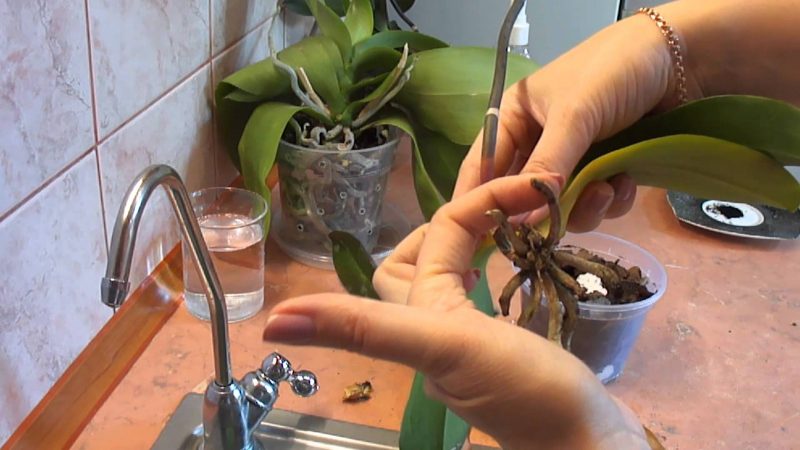
The disease can last for a long time until the plant completely loses its root system and falls out of the pot.
To revive the orchid, if the roots rotted, only cardinal measures will help.
To see the problem, the flower must be removed from the flowerpot. Damaged roots may vary in color from healthy ones, darken, have an unpleasant odor, and become slippery.
Revitalizing Orchid with Sluggish Leaves
Orchids are amazing plants that can recover even if they completely lose the root. The choice of treatment method will depend on the degree of damage to the root system.
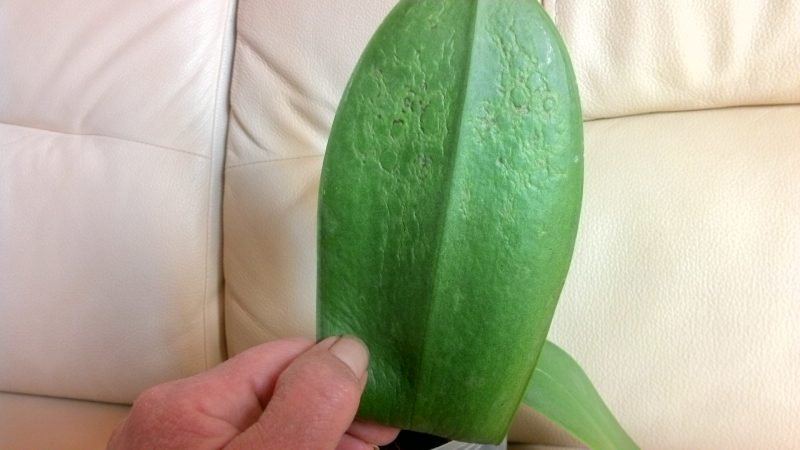
If the orchid leaves have lost turgor, but some of the roots remain, its restoration will be much faster.
- The rotten part is cut off, the slices are treated with fungicide and any antibiotic purchased in the store.
- You can use Fitosporin and Streptocide. Streptocide is pounded and pulp is made by adding a few drops of water.Lubricate the slices, drying the plant for several hours in the air.
- A sick orchid can be put in a plastic container without a substrate. To restore leaf turgor, they are moistened daily with a cotton pad. It is important to wipe the sheet plate on both sides - bottom and top.
If the flower withered, what to do
If the orchid withered, after the first transplant, you can find completely rotten roots in it. The flower is expensive and beautiful, it is a pity to throw it away, so it is important to choose an effective way of restoration. We need to prepare that this process will take a lot of time - from several months to a year.
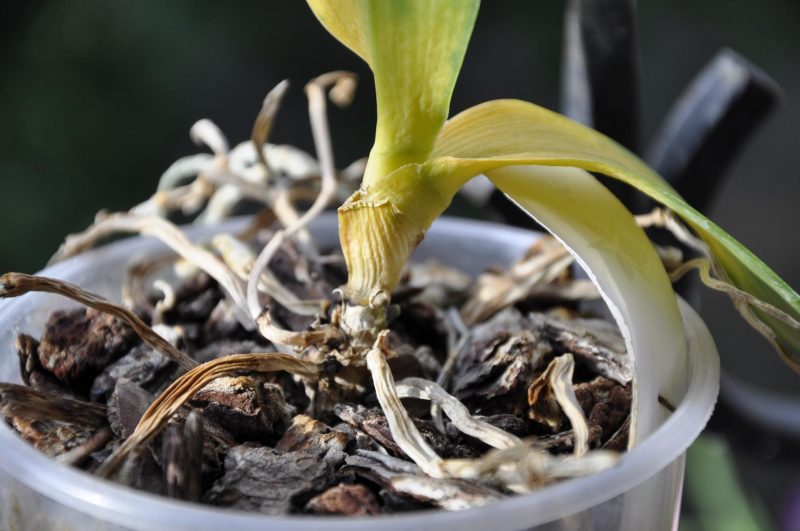
During rehabilitation, the orchid is treated on the leaves with growth stimulants and a weak solution of fertilizers. In addition to moistening the leaves, you need a bright light.
In winter, you can use the backlight with phytolamps, or at least put a flower on the southern windowsill.
How to cure an orchid to give roots
There are a lot of ways to cure an orchid without roots. In each case, the choice should be individual. It all depends on the characteristics of the plant and the conditions that the florist can create for him in the apartment.
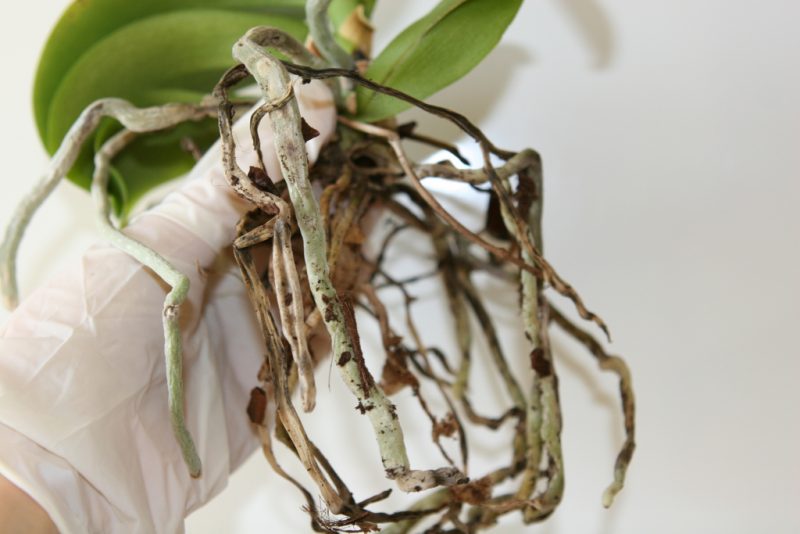
First of all, the degree of damage to orchids affects the speed of recovery.
Procedure for detecting rotten roots:
- cut off the rotten part to a healthy tissue;
- to cover the places of cuts with gruel from "Fundazol";
- put the plant in a pot without substrate;
- Once every 5 days, spray the culture on the leaves, removing residual moisture from the base of the leaf plates.
If the roots are completely rotted away, the flower is placed in a pot with drainage holes filled with pine bark. Foam is placed under its base, covered with moist moss on top. Such a plant does not require watering, it is only slightly sprayed over moss so that new roots begin to grow. This method of treatment involves daily rubbing of the leaves.
Another option for resuscitation is to put the flower in a special container above the water. An orchid without roots will start to let out new roots due to evaporation of the surrounding moisture.
It is interesting:gerbera indoor: home care
If there is no time to look daily at a flower, you can place it in greenhouse conditions. All sections after the removal of rotten roots should be well treated with antibiotics and fungicides so that high humidity does not play a trick.
Saving a flower if there are no roots
You can save an orchid with sluggish leaves by placing it in a special container with an eminence in the middle. The plant will rest its base on a dry platform, and not touch the water poured into the recess.
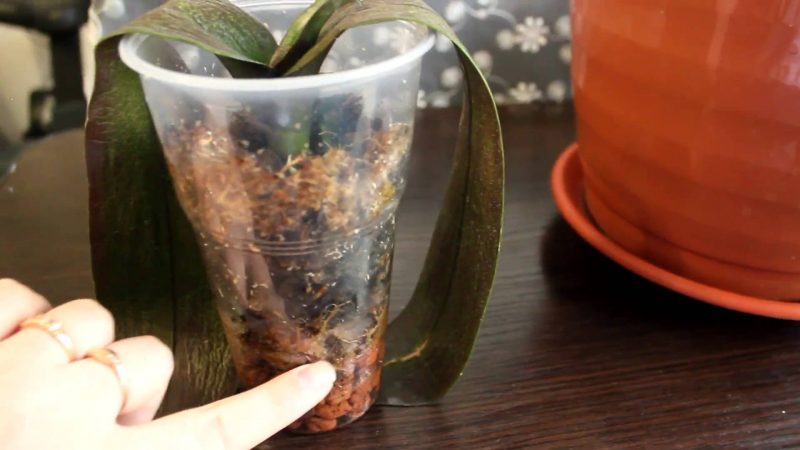
Due to the evaporation of moisture in a few months, the roots begin to grow in the flower.
During resuscitation, its leaves should be wiped with a damp cloth moistened with water or a growth stimulator (Epin, Zircon).
Resuscitation in greenhouse conditions
Greenhouse conditions are needed for orchids that have stopped growing. At home, in the tropics, plants are accustomed to a warm and humid climate.

To return to life phalaenopsis, left without roots, use a homemade greenhouse. Such a greenhouse is made of plastic 5-liter cans, food containers and other improvised material. Inside the greenhouse, increased humidity remains.
In the room where the sick orchids are located, there should be no drafts, sudden changes in temperature and cold. The optimum air temperature is +22 ° C, bright lighting for at least 12 hours a day.
A dendrobium with bulbous roots that store moisture requires other resuscitation conditions. He does not need to make a greenhouse. If only one bulb is left from the entire root system, it is placed in a container with moistened moss and bark. Do not sprinkle on top with a substrate, place them horizontally and wait until baby sprouts appear from the kidneys on the bulb.
Without the use of a greenhouse
To revive an orchid that has lost its roots without using a greenhouse, it is placed in a new substrate consisting of pine bark.
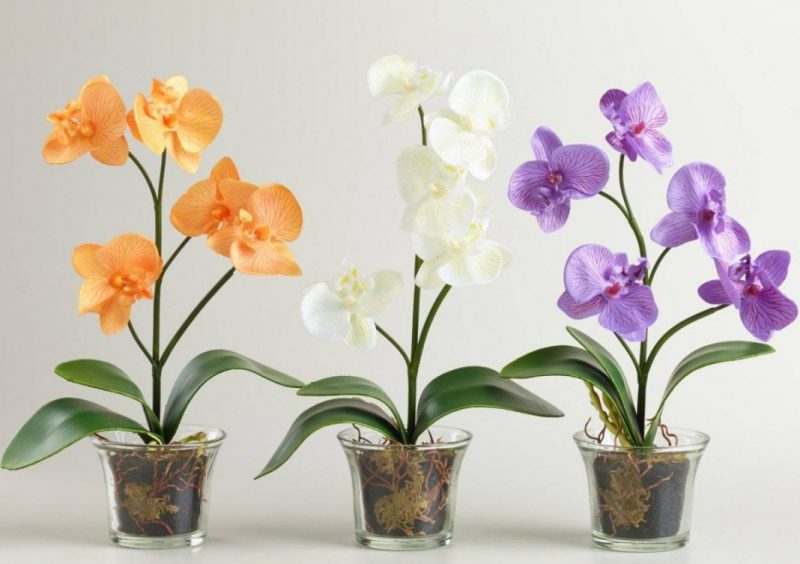
- Expanded clay is poured into the bottom of a plastic pot with holes.
- Then - pieces of pine bark of a large fraction.
- Above - smaller pieces of bark.
- Put the base of the orchid without roots.
- The top layer is sphagnum moss, well wrung out of moisture. Moss should not touch the plant closely.
- An orchid is fixed, tied to a plastic support, which is usually used to support peduncles.
Such a plant can not be watered.
At the orchid, they wipe the leaves with a damp cloth, moss is occasionally moistened with a spray bottle, trying not to get on the base of the leaves so that the process of decay does not begin.












